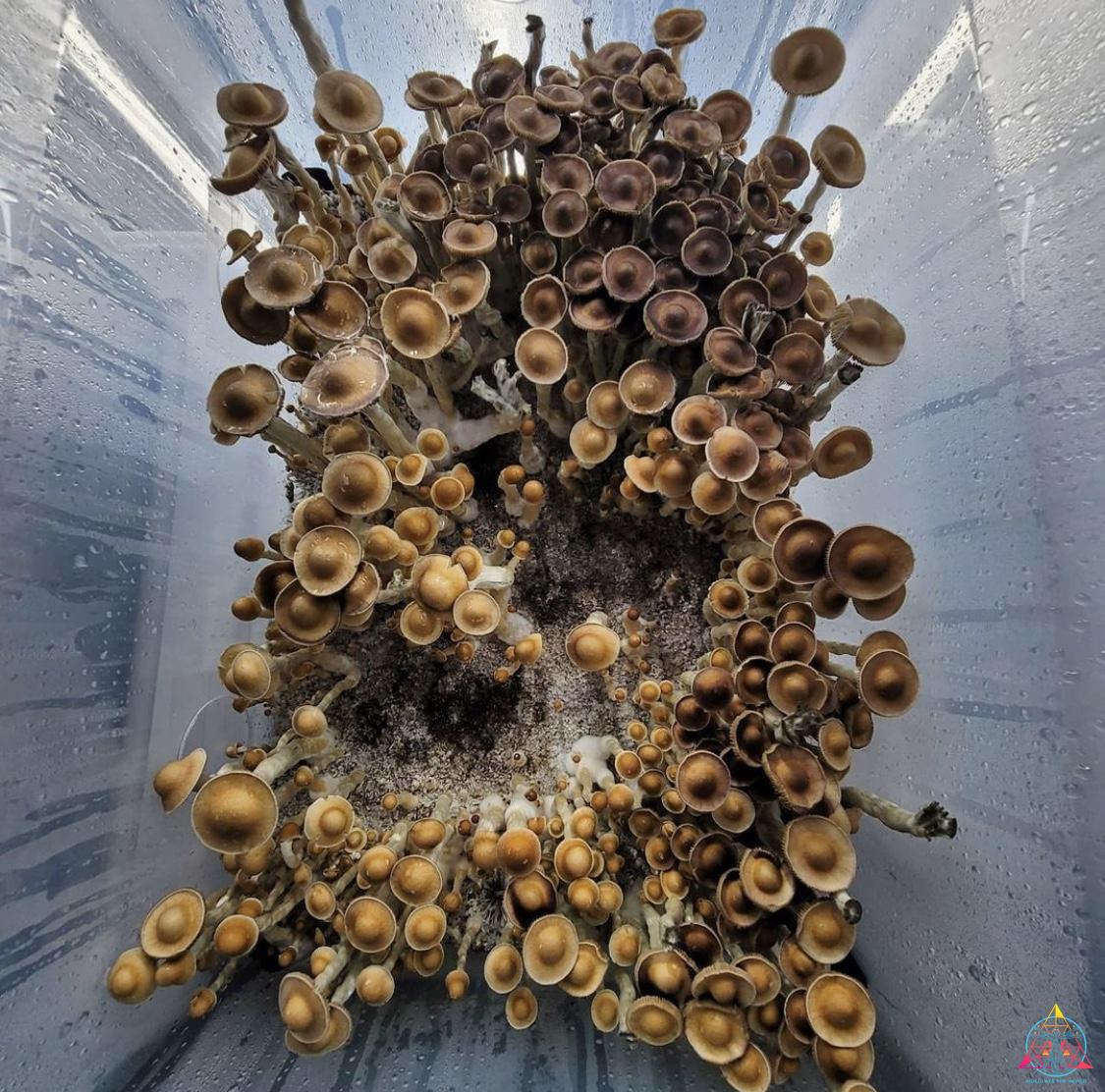Secondary Metabolites, “MYC Piss Explained, by Seth Austin of ITW.NEWS.
Mushrooms have their own metabolism, it is how they consume their substrate. Unlike plants that use photosynthesis, think of them as moving stomachs with the ability to respond to stimuli. Different species of fungi use a varying array of digestive fluids, some using enzymes that can attack wood or a flesh, some utilizing acid that can eat through iron and granite, can accept carbs from sybiants, and several other methods of nutrient uptake. Spores play a crucial role in fungal reproduction, allowing these organisms to spread and colonize new environments.
So what is that yellow/brown liquid you see being exuded by mycelium? While being known in the community as metabolites, or the more fun name: myc piss, they are technically secondary metabolites. While secondary metabolites typically have no direct role in the consumption of substrate, they do have a multitude of purposes for the exuding fungus; as well as their cohabitants. “It has been argued that secondary metabolites and other small bioactive molecules of biogenic origin are so vital to the organisms that produce them that they should form the fourth pillar of “the central dogma of biology” along with DNA, RNA, and proteins (*2) Before we dive in I would like to preface that I believe that these metabolites hold an extreme wealth of knowledge and potential medicines. This excerpt showcases some of the potential “Advances in genome sequencing, computational tools, and analytical chemistry are enabling the rapid connection of gene clusters with their metabolic products. At least three fungal drug precursors, penicillin K and V, mycophenolic acid, and pleuromutilin, have been produced by synthetic reconstruction and expression of respective gene clusters in heterologous hosts.”
Evolutionarily speaking, Fungus is believed to have evolved this ability for a multitude of factors, ranging from fighting off pathogens, chemosignaling, sunscreen, and even for warring with other fungi.
Next time you see myc piss, now you know it is probably fighting a war you can’t see. A really cool microscopic battle that could result in curing Diseases, making new materials, and genetic testings we can’t even imagine right now. These gooey little snapshots of mycological history encoded with their own organic data points, Will be the future for many different avenues of medicine, cosmetics, and many other industries.
Related Articles
What Are Rust Colored Mushroom Spores?
Rust spores are cubensis mushroom spores which have turned red, orange, or reddish-brown due to a genetic mutation. When you think of Psilocybe cubensis, you’d typically expect a dark brown or purple spore print, but this is not always the case. Rust mushroom strains...
How to Grow Chestnut Mushrooms
Learn how to grow chestnut mushrooms indoors from scratch in 7 simple steps, from making substrate & grain spawn to ideal fruiting conditions.
The Amanita Muscaria Christmas Legend
The Amanita muscaria Christmas connection may be as old as Santa Claus himself. Learn more about the psychedelic influence on Christmas culture.











